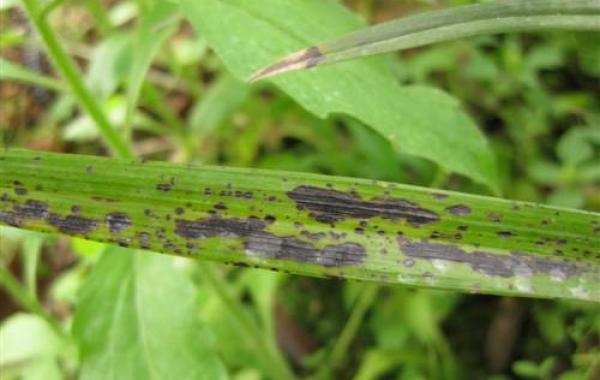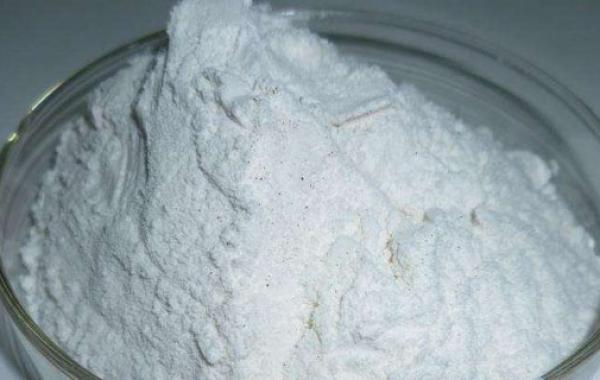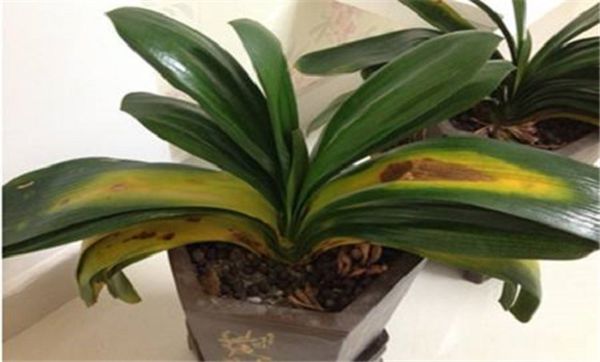What are the symptoms of orchid anthracnose? prevention and control of orchid anthracnose

Since ancient times, orchids have been regarded as a symbol of nobility and elegance, and have been appreciated by a large number of poetry writers. It has been cultivated in China for a thousand years, and it is still cultivated by many people. However, in the cultivation of orchids, we often encounter a variety of diseases and insect pests. Let's take a look at the symptoms and control measures of orchid anthracnose:
Symptoms of orchid anthracnose
The symptoms of orchid anthracnose are more complex, and the larger ones can be divided into three types: round spots, round patches and withered leaves. When harming orchid plants, they are mainly divided into two types according to the size of orchid seedlings: one kind infects the tender leaves of seedlings, which first forms brown dots at the base of the leaves, then expands to form wheel spots, and when the heart leaves rot seriously; the other kind infects the leaves of old seedlings to form round and oval disease spots on the leaf surface, and when the leaf edge occurs, semicircle disease spots are formed at the initial stage: the disease spots form reddish brown patches at the initial stage of the disease. In the later stage of the disease, the disease changes from brown to grayish white, the edge is dark brown, and there is a chlorotic halo around it. The diameter of the disease spot is mostly 0.1mur0.5 cm. In severe cases, the disease spots are connected to each other to form a patch. If the disease is not effectively controlled, the leaves die gradually from top to bottom. In the later stage of the disease, the disease department produces whorled small black dot conidial discs. When the air humidity is high, the production department produces whorled small black spots pink colloid, that is, the transmission source of pathogen re-infection-conidium.
Incidence characteristics of orchid anthracnose
1. The occurrence of the disease is related to cultivation and management. the disease can occur all the year round in Dali City, in which the disease is more serious in spring and autumn, and the severity of the disease in summer is mainly related to cultivation management. The summer (June-August) in Dali City is the rainy season, when the air humidity is relatively high. If water is sprayed continuously to the orchid leaves in the orchid garden, the disease tends to aggravate in summer; on the contrary, under the condition of natural air humidity, if the ventilation is strengthened and the amount of spraying water is reduced, the occurrence of the disease is not very serious. In addition, the investigation showed that the disease was more serious in orchid orchard with poor cultivation and management, such as fine basin soil, soil consolidation, excessive watering, poor root system, partial application of nitrogen fertilizer and poor ventilation.
two。 The orchid seedlings raised in the greenhouse related to the change of the cultivation place are sold directly to the natural growers on the balcony with moisturizing conditions without seedling treatment, which are not only prone to leaf dehydration and dryness, but also prone to orchid anthracnose. The typical symptom is that the orchid leaves die slowly from top to bottom.
3. In general, orchids with strong growth, good roots, adequate nutrition and balanced orchids are not easy to get sick, while poor orchid seedlings are easy to get sick because of their weak disease resistance. On the contrary, the orchid seedlings with poor root system and poor growth are easy to get sick because of their weak disease resistance.
4. Related to the time of introduction and domestication, the orchids planted in Dali are mainly lotus orchids. After wild orchids are raised at home, they have high seedling rate, strong growth and strong disease resistance in the first few years, but after years of cultivation, the wild orchids degenerate and the disease resistance weakens, and the incidence tends to worsen. The most typical is Xiaoxue, a famous product of Yunnan orchid, which has been domesticated for hundreds of years and is most prone to orchid anthracnose.
5. Related to the types of orchids in general, the orchids with thick and hard leaves and those with erect leaves have strong disease resistance, such as the tiger orchid and the iron bone in the Jian orchid; while the lotus petal orchid, spring orchid, green orchid and other species mainly planted in Dali are more susceptible to the disease: the famous products in the lotus petal orchid are more susceptible to the disease because of excessive seedling division and weaker growth orchids.
Pathogen and occurrence regularity of orchid anthracnose
The pathogen Colletotrichumgloeosporioides (Penz.) Sacc is Colletotrichum gloeosporioides. The pathogen overwintered with mycelium and conidial disk on diseased leaves or remnants of fallen soil. Conidia are produced the following year, which are spread by rain and insects and invade from stomata and wounds. The optimum temperature for conidia germination is 20 to 25 ℃, and the relative humidity is more than 80%. It can infect when the temperature and humidity are suitable in early spring, especially in the high temperature, rainy season and continuous rainy weather from May to June, or in the years with more autumn rain or typhoon from September to October. In particular, the disease can be aggravated by high humidity and muggy, sometimes sunny and sometimes rainy (or showers) weather, poor management of fertilizer and water, over-dense pots, staggered abrasions of leaves, freezing injury of plants and so on. Potted orchids also occur all the year round in greenhouses or families in the north, such as too dense plants, spray watering, frost damage, over-sticky basin soil, poor drainage and so on.
Prevention and control of orchid anthracnose
First, basin soil sticky weight and high humidity hardening, poor drainage, not conducive to root ventilation, will aggravate the disease; watering should not be sprayed to the plant cluster, should be slowly poured from the edge of the basin, and should avoid foliar spraying, so as not to aggravate the disease and expand the spread.
Second, in the mildew and rainy season, the disease is more serious, it should be noted that the orchid room must be ventilated and transparent, the orchid basin should not be placed too dense, and there should be a shade shed when placed in the open field to prevent exposure, and to prevent the sudden wind and torrential rain from July to September, so as to avoid injury and infection of orchid leaves; during this period, it is necessary to increase the application of phosphorus and potassium fertilizer, not nitrogen fertilizer, and pay attention to strengthening management to make orchid plants grow strong and enhance disease resistance.
Third, be careful not to make the orchid leaves suffer from frost injury and frost injury, so as to avoid bruising, so as not to increase the chance of infection due to reappearance of the wound.
Fourth, the orchid leaves overlap and are prone to infection. It is found that the diseased leaves should be burned at any time, and the fallen leaves in the basin should also be removed to prevent spread.
Fifth, select excellent varieties, such as "iron stem element" in Jianlan has strong disease resistance, while "Daitousu" in Jianlan and "Da Fugui" in Chunlan are easy to get infected and more serious.
Sixth, the harm of shell insects will promote the occurrence of diseases, so attention should be paid to timely disinfestation.
7. The suitable temperature for the growth of bacteria is 22 to 28 ℃, the air relative humidity is more than 95%, the soil value from pH5.5 to 6 is conducive to the germination of bacteria, and spores can be transmitted over a long distance by air flow and rainfall, which should attract our attention.
Eighth, during the peak period of the disease, 75% of chlorothalonil 500 times liquid can be sprayed once every 3 days, even 3 to 4 times, or 50% carbendazim wettable powder 500 times liquid, for prevention and treatment.
- Prev

What do you need to pay attention to when raising orchids with microbial agents?
What do you need to pay attention to when raising orchids with microbial agents?
- Next

What if the leaves of Cymbidium turn yellow? what if the leaves of Cymbidium turn yellow?
What if the leaves of Cymbidium turn yellow? what if the leaves of Cymbidium turn yellow?
Related
- Is the orchid suitable for indoor use? Is it good for the body?
- How to prevent the empty root of orchids?
- What to do after the crab claw orchid is withered?
- Why are the leaves of orchids always yellow? Fertilizing and watering.
- Can the root of the gentleman orchid be saved if it is rotten?
- Diagnosis and treatment of cotton-blowing beetle insects in Cymbidium
- There is a way for a gentleman's orchid to rot.
- What is the most suitable temperature and humidity for the orchid?
- How to raise a gentleman's orchid? Cultivation techniques of Cymbidium
- How to prepare the nutritive soil for the cultivation of Cymbidium

